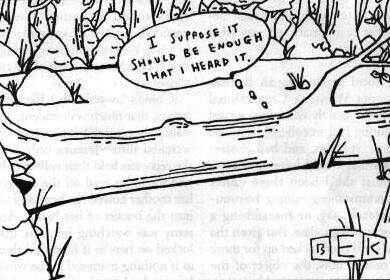
Problem D: Forests
If a tree falls in the forest, and there's nobody there to hear,
does it make a sound? This classic conundrum was coined by
George Berkeley (1685-1753), the Bishop and influential Irish philosopher whose primary philosophical
achievement is the advancement of what has come to be called subjective idealism. He wrote a number of works, of which the most widely-read are
Treatise Concerning the Principles of Human Knowledge (1710) and Three Dialogues between Hylas and Philonous (1713)
(Philonous, the "lover of the mind," representing Berkeley himself).
A forest contains T trees numbered from 1 to T and P
people numbered from 1 to P.
Input
The input begins with a single positive integer on a line by itself indicating
the number of the cases following, each of them as described below.
This line is followed by a blank line, and there is also a blank line between
two consecutive inputs.
Standard input consists of a line
containing P and T followed by several
lines, containing a pair of integers i and j,
indicating that person i has heard tree j fall.
People may have different opinions as to which trees,
according to Berkeley, have made a sound.
Output
For each test case, the output must follow the description below.
The outputs of two consecutive cases will be separated by a blank line.
How many different opinions are
represented in the input? Two people hold the same opinion only if they
hear exactly the same set of trees.
You may assume that
P < 100 and T < 100.
Sample Input
1
3 4
1 2
3 3
1 3
2 2
3 2
2 4
Output for Sample Input
2
